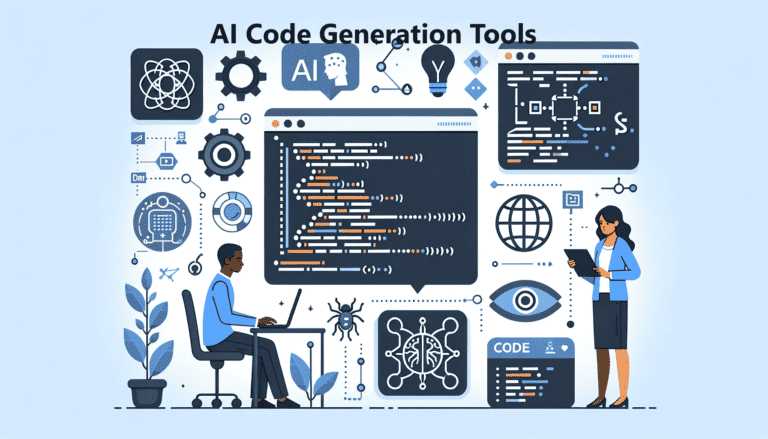
In the ever-evolving realm of artificial intelligence, it is crucial to address and mitigate bias in machine learning models. Bias can inadvertently infiltrate these models, resulting in unfair and discriminatory outcomes. In order to ensure that AI technology benefits all segments of society, it is imperative to tackle bias head-on and implement strategies that promote fairness and equality. By shining a light on this critical issue, we can pave the way for more inclusive and unbiased AI systems that truly reflect the diversity of our world.
Understanding Bias in Machine Learning Models
Machine learning models are increasingly being utilized in various domains and industries to make decisions and automate processes. However, it is important to recognize that these models are not devoid of bias. Bias refers to the unfair or prejudiced treatment of certain groups or individuals, resulting in inaccurate or discriminatory outcomes. In the realm of machine learning, bias can manifest itself in different ways and can originate from multiple sources. Understanding and addressing bias is crucial to ensure the ethical and fair use of machine learning models.
Types of Bias in Machine Learning
Bias in machine learning models can take on different forms, each with its own implications. Some common types of bias include:
-
Statistical Bias: Statistical bias occurs when the training data used to develop the model is not representative of the real-world population. This can lead to skewed predictions and inaccurate outcomes.
-
Prejudice Bias: Prejudice bias arises when the model’s predictions favor or discriminate against certain individuals or groups based on personal beliefs or societal stereotypes. This type of bias can perpetuate existing inequalities and reinforce social biases.
-
Omission Bias: Omission bias occurs when the model fails to consider relevant factors or attributes, leading to incomplete or biased decisions. This can happen if the training data does not include a comprehensive representation of all relevant variables.
-
Confirmation Bias: Confirmation bias refers to situations where the model primarily relies on information that confirms pre-existing assumptions or biases. This can lead to reinforcement of biased beliefs and limited perspectives.
Sources of Bias in Machine Learning Models
Bias in machine learning models can originate from various sources throughout the development and deployment process. Some common sources of bias include:
-
Biased Training Data: Bias in training data can occur if the data is collected in a way that favors certain individuals or if it reflects existing discriminatory practices. This biased training data can propagate bias in the resulting models.
-
Algorithmic Design Choices: The algorithms used in machine learning models can inadvertently introduce bias if they are designed to prioritize certain attributes or factors. If these design choices are based on biased assumptions or incomplete understanding, the model can produce biased outcomes.
-
Data Collection and Sampling: Bias can also arise from the data collection and sampling techniques used. If the data collection process fails to capture a diverse and representative sample, the resulting model may not generalize well to the entire population and can exhibit biased behavior.
-
Implicit Bias of Developers: Even the developers and data scientists involved in building machine learning models can unknowingly introduce bias based on their own implicit biases and assumptions. These biases can influence the data preprocessing steps, algorithm selection, and interpretation of results.
Measuring Bias in Machine Learning Models
To effectively address bias in machine learning models, it is essential to have reliable methods to measure and quantify its presence. Several quantitative and qualitative measures have been developed to assess bias in machine learning models.
Quantitative Measures of Bias
Quantitative measures involve numerical analysis to evaluate and quantify bias. Some widely used quantitative measures of bias include:
-
Difference in Predictive Accuracy: This measure compares the performance of the model across different subgroups. If the model exhibits significant variation in predictive accuracy between groups, it indicates the presence of bias.
-
False Positive and False Negative Rates: By examining the false positive and false negative rates across groups, one can identify whether the model disproportionately misclassifies certain groups, indicating potential bias.
-
Impact Ratio: The impact ratio measures the relative impact of the model’s decisions across different groups. If certain groups experience disproportionately adverse consequences, it suggests unequal treatment and bias.
Qualitative Measures of Bias
Qualitative measures focus on the interpretability and fairness of the model’s decisions rather than relying solely on numerical analysis. Some qualitative measures to assess bias include:
-
User Feedback and Perception: Gathering feedback from users, especially those who belong to different demographic groups, can provide valuable insights into perceived bias and fairness. This feedback can guide improvements in model design and decision-making processes.
-
Discrimination Testing: Discrimination testing involves designing specific scenarios or experiments to evaluate whether the model’s decisions are influenced by sensitive attributes, such as race or gender. If the model demonstrates differential treatment based on these attributes, it suggests bias.
-
Interpretability and Explainability: Evaluating the interpretability and explainability of the model can help identify potential sources of bias. Models that provide detailed explanations of their decisions make it easier to detect and address bias when it occurs.

Challenges in Addressing Bias in Machine Learning Models
While addressing bias in machine learning models is essential, it is not without its challenges. Overcoming these challenges requires a proactive approach and careful consideration of various factors.
Lack of Diverse and Representative Data
One significant challenge in addressing bias stems from the lack of diverse and representative data. If the training data does not capture the full range of attributes and characteristics present in the population, the resulting model may produce biased outcomes. Collecting diverse and representative data can be challenging, especially when dealing with historically underrepresented or marginalized communities.
To overcome this challenge, data scientists and developers need to actively seek out diverse data sources and ensure proper representation. Collaboration with diverse stakeholders and communities can help identify relevant data sources and ensure a broader perspective in model development.
Implicit Bias in Algorithms
Another challenge lies in the implicit biases that can be present in the algorithms themselves. Algorithms are designed by humans and can inadvertently reflect human biases. These biases can perpetuate societal inequalities and discriminatory practices if left unaddressed.
To mitigate this challenge, continuous evaluation and auditing of algorithms are crucial. Developers must critically examine the underlying assumptions and decision-making processes in algorithms and actively work towards reducing bias. Open discussions and transparency can aid in identifying and resolving implicit biases in algorithms.
Techniques for Addressing Bias in Machine Learning Models
Addressing bias in machine learning models requires a combination of pre-processing techniques, algorithmic fairness techniques, and post-processing techniques. Each technique aims to mitigate bias at different stages of the model development process.
Pre-processing Techniques
Pre-processing techniques focus on manipulating the training data to mitigate bias before feeding it into the model. These techniques include:
-
Data Augmentation: Data augmentation involves increasing the diversity of training data by creating additional synthetic data points. This technique can help address bias by ensuring adequate representation of underrepresented groups.
-
Data Balancing: Data balancing techniques involve adjusting the relative frequency of different classes or groups in the training data. By equalizing the class distribution, these techniques can mitigate bias and prevent over-representation or under-representation of certain groups.
-
Feature Engineering: Feature engineering involves carefully selecting and engineering input features to reduce bias. By considering a broader range of relevant features, it is possible to reduce the influence of biased attributes and promote fair decision-making.
Algorithmic Fairness Techniques
Algorithmic fairness techniques focus on modifying the model or algorithm to reduce bias during the learning process. Some common algorithmic fairness techniques include:
-
Equalized Odds: Equalized odds aims to ensure that the model’s predictions have similar error rates across different subgroups. By adjusting the model to achieve equalized odds, bias can be mitigated and a more fair decision-making process can be achieved.
-
Demographic Parity: Demographic parity strives for equal representation and access to opportunities across different groups. Modifying the model to ensure demographic parity minimizes bias and promotes fairness in decision-making.
-
Counterfactual Fairness: Counterfactual fairness focuses on evaluating the fairness of individual predictions. This approach identifies instances where decisions would have been different if an individual belonged to a different group. By addressing these potentially biased predictions, counterfactual fairness ensures fair treatment.
Post-processing Techniques
Post-processing techniques involve modifying the model’s predictions after the initial learning phase. These techniques aim to remove or mitigate bias in the final decision-making process. Some post-processing techniques include:
-
Threshold Adjustments: Threshold adjustments involve modifying the classification thresholds to achieve a desired balance between false positives and false negatives. By carefully setting these thresholds, bias can be reduced and fairness can be improved.
-
Reweighting: Reweighting techniques assign different weights to samples based on their subgroup membership. This allows the model to give appropriate consideration to underrepresented groups, mitigating bias and promoting fairness.
-
Bias Correction: Bias correction involves adjusting predictions or outcomes based on known biases present in the training data. By accounting for these biases, post-processing techniques can rectify biased decisions and ensure fair treatment.
Ethical Considerations in Addressing Bias
Addressing bias in machine learning models goes beyond technical considerations and requires an understanding of the ethical implications involved. It is important to recognize the impact of bias on society and acknowledge the responsibility of data scientists in addressing these biases.
The Impact of Bias on Society
Bias in machine learning models can perpetuate existing social inequalities and marginalize certain groups, leading to real-life consequences. For example, bias in facial recognition systems can result in unjust surveillance and misidentification, disproportionately affecting certain racial or ethnic groups. Similarly, bias in sentencing algorithms can result in unfair and discriminatory outcomes, perpetuating the systemic bias in the criminal justice system.
It is crucial to understand and acknowledge the potential harm caused by biased models and work towards minimizing these negative impacts. The ethical implications of bias extend beyond technical considerations and require a broader societal perspective.
Responsibility of Data Scientists in Addressing Bias
Data scientists and developers have a crucial role in addressing bias in machine learning models. They bear the responsibility of actively identifying and mitigating bias throughout the model development process. This responsibility includes:
-
Awareness and Training: Data scientists should continuously educate themselves about bias in machine learning and keep up with the latest research and techniques for bias mitigation. They should also undergo training to recognize and challenge their implicit biases.
-
Transparency and Accountability: Data scientists must foster transparency in their work, documenting and sharing their methods, assumptions, and decisions throughout the model development process. This allows for external scrutiny and enables accountability for the potential biases present in the models.
-
Collaboration and Diversity: Actively seeking diverse perspectives and collaborating with diverse stakeholders can contribute to more robust and unbiased models. By involving a wide range of perspectives in decision-making, biases can be challenged and mitigated.
Case Studies of Bias in Machine Learning Models
Examining real-world case studies helps illustrate the impact of bias in machine learning models and highlights the importance of addressing these biases.
Bias in Facial Recognition Systems
Facial recognition systems have been shown to exhibit significant bias, especially towards certain racial and ethnic groups. Misidentification and incorrect classification have been documented, leading to unjust surveillance and potential violation of privacy rights. It is crucial to address the underlying biases present in these systems to ensure fair and ethical deployment.
Bias in Sentencing Algorithms
Sentencing algorithms used in the criminal justice system have been found to exhibit biased behavior, disproportionately affecting certain racial and socioeconomic groups. Such bias can perpetuate systemic inequalities and result in unfair and unjust sentencing. Efforts must be made to identify and mitigate these biases to ensure a more equitable and just criminal justice system.
Best Practices for Mitigating Bias
Mitigating bias in machine learning models requires a proactive and systematic approach. Consider the following best practices to address and reduce bias effectively:
Diversifying the Data and Considering Multiple Perspectives
To mitigate bias, it is crucial to collect diverse and representative data. This involves actively seeking out data from underrepresented groups and ensuring fair and equitable representation. By considering multiple perspectives and increasing diversity in the training data, bias can be reduced, leading to more fair and accurate models.
Regular and Ongoing Model Audits
Regularly auditing models for bias is essential to identify and address any emerging biases. Continuous monitoring and evaluation of the model’s performance across different groups can help mitigate bias and promote fairness. Auditing should be an ongoing process, with feedback from users and stakeholders informing improvements and adjustments.
Mitigating Bias in Real-world Applications
Bias can have significant real-world implications, especially in applications like hiring practices and loan approval systems.
Bias in Hiring Practices
Machine learning models are increasingly used in recruitment and hiring processes, but they can inadvertently perpetuate biases present in historical hiring data. For instance, if the historical data contains bias against certain groups due to past discrimination, the model can learn and reproduce those biases, leading to unfair outcomes. To mitigate bias in hiring practices, it is important to carefully evaluate and adjust the model’s decision-making process, actively considering fairness and diversity.
Bias in Loan Approval Systems
Loan approval systems can also be subject to bias if they are trained on biased historical data. Disproportionate denial or approval of loans to certain groups can perpetuate financial inequalities and discrimination. To address bias in loan approval systems, it is crucial to analyze and modify the model’s decision-making process, ensuring fair and equitable access to financial resources.
In conclusion, bias in machine learning models is a critical issue that needs to be addressed to ensure ethical and fair deployment. Understanding the types and sources of bias, measuring its presence, and adopting appropriate techniques to mitigate bias are all significant steps in this process. By considering the ethical implications and taking responsibility for addressing bias, data scientists can contribute to the development of more robust and unbiased machine learning models.






